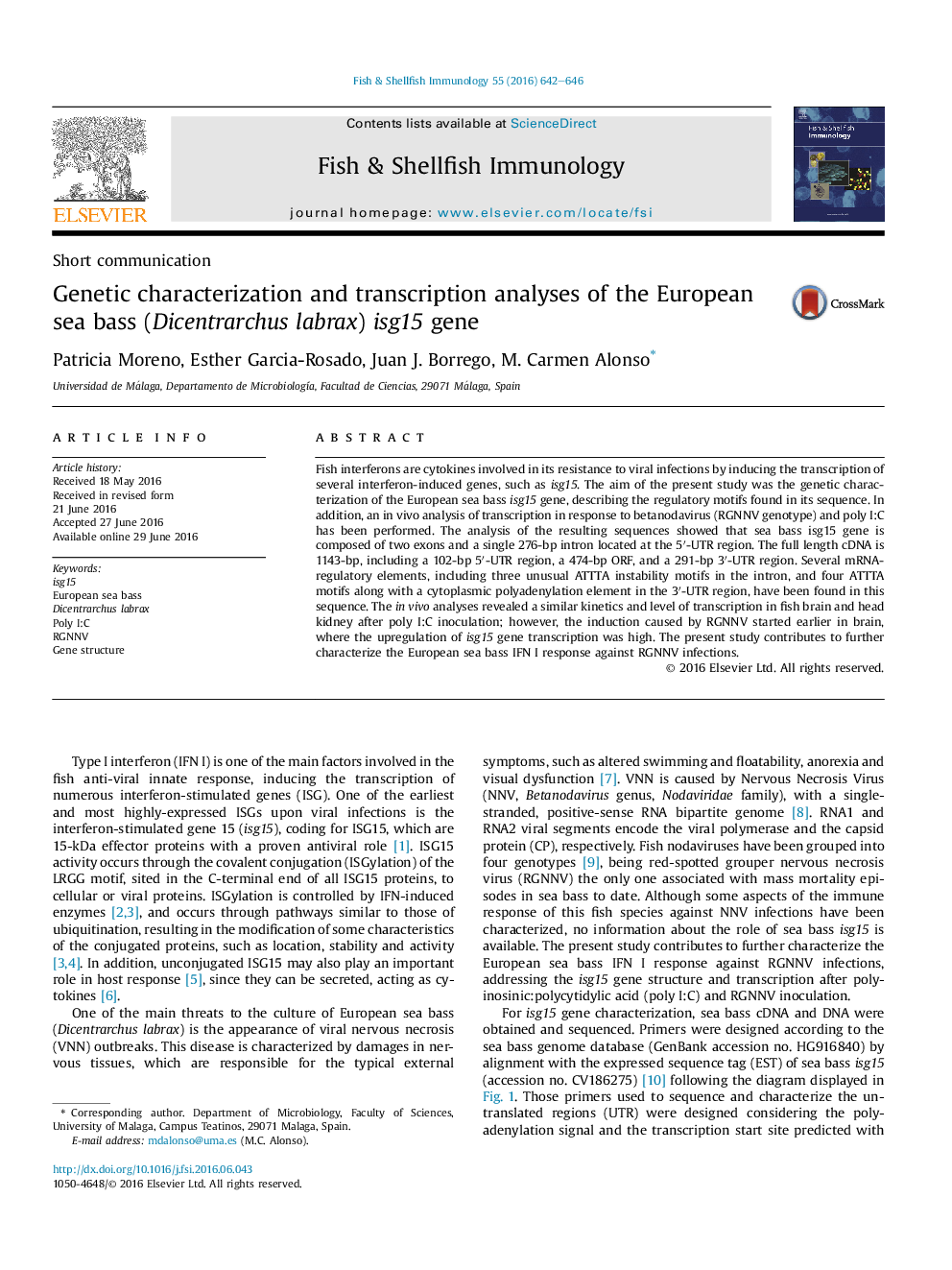| Article ID | Journal | Published Year | Pages | File Type |
|---|---|---|---|---|
| 2430833 | Fish & Shellfish Immunology | 2016 | 5 Pages |
•Sea bass isg15 has a 276-pb intron in the 5′-UTR region containing three instability motifs.•The 3′-UTR of sea bass isg15 contains four instability motifs and one CPE.•The full sea bass isg15 cDNA is composed of a 102-bp 5′-UTR, 474-bp ORF and 291-bp 3′-UTR.•RGNNV possibly triggers an earlier and higher isg15 transcription in brain than in kidney.
Fish interferons are cytokines involved in its resistance to viral infections by inducing the transcription of several interferon-induced genes, such as isg15. The aim of the present study was the genetic characterization of the European sea bass isg15 gene, describing the regulatory motifs found in its sequence. In addition, an in vivo analysis of transcription in response to betanodavirus (RGNNV genotype) and poly I:C has been performed. The analysis of the resulting sequences showed that sea bass isg15 gene is composed of two exons and a single 276-bp intron located at the 5′-UTR region. The full length cDNA is 1143-bp, including a 102-bp 5′-UTR region, a 474-bp ORF, and a 291-bp 3′-UTR region. Several mRNA-regulatory elements, including three unusual ATTTA instability motifs in the intron, and four ATTTA motifs along with a cytoplasmic polyadenylation element in the 3′-UTR region, have been found in this sequence. The in vivo analyses revealed a similar kinetics and level of transcription in fish brain and head kidney after poly I:C inoculation; however, the induction caused by RGNNV started earlier in brain, where the upregulation of isg15 gene transcription was high. The present study contributes to further characterize the European sea bass IFN I response against RGNNV infections.
